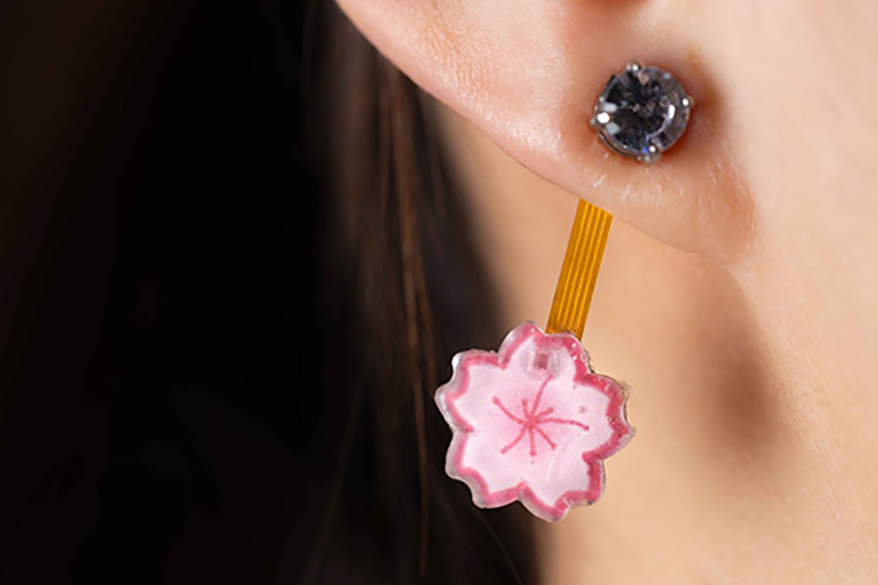RESEARCHERS AT THE University of Washington just introduced the “Thermal Earring,” a wireless wearable that continuously monitors a user’s earlobe temperature. In a small-scale study, the prototype measured the fever of sick patients more accurately than a smartwatch and showed promise for tracking changes in stress, exercise and ovulation.
The smart earring prototype is about the size and weight of a small paperclip and has a 28-day battery life. A magnetic clip attaches one temperature sensor to a wearer’s ear, while another sensor dangles about an inch below it for estimating room temperature. The earring can be personalized with fashion designs made of resin (in the shape of a flower, for example) or with a gemstone, without negatively affecting its accuracy.
Researchers published their results in the January 12 edition of Proceedings of the ACM on Interactive, Mobile, Wearable and Ubiquitous Technologies. The device is not currently commercially available.
“I wear a smartwatch to track my personal health, but I’ve found that a lot of people think smartwatches are unfashionable or bulky and uncomfortable,” said co-lead author Qiuyue (Shirley) Xue, a UW doctoral student in the Paul G. Allen School of Computer Science & Engineering.
“I also like to wear earrings, so we started thinking about what unique things we can get from the earlobe,” she continued. “We found that sensing the skin temperature on the lobe, instead of a hand or wrist, was much more accurate. It also gave us the option to have part of the sensor dangle to separate ambient room temperature from skin temperature.”

Advertisement
The researchers noted that creating a wearable small enough to pass as an earring, yet robust enough to hold a charge for four weeks presented technical challenges.
“It’s a tricky balance,” said co-lead author Yujia (Nancy) Liu, who was a UW masters student in the electrical and computer engineering department when doing the research and is now at the University of California San Diego. “Typically, if you want power to last longer, you should have a bigger battery. But then you sacrifice size. Making it wireless also demands more energy.”
The team made the earring’s power consumption as efficient as possible, while also making space for a Bluetooth chip, a battery, two temperature sensors and an antenna.
Instead of pairing it with a device, which uses more power, the earring uses Bluetooth advertising mode — the transmissions a device broadcasts to show it can be paired. After reading and sending the temperature, it goes into deep sleep to save power.
Researchers noted that while core body temperature generally stays relatively constant outside of fever, earlobe temperature varies more, presenting several novel uses for the Thermal Earring.
In small proof-of-concept tests, the earring detected temperature fluctuations correlated with eating, exercising and experiencing stress. The temperature readings were also accurate enough to be used for ovulation and period tracking, as well as determining the effectiveness of certain medication.
Advertisement
“Current wearables like Apple Watch and Fitbit have temperature sensors, but they provide only an average temperature for the day, and their temperature readings from wrists and hands are too noisy to track ovulation,” Xue said. “So we wanted to explore unique applications for the earring, especially applications that might be attractive to women and anyone who cares about fashion.”